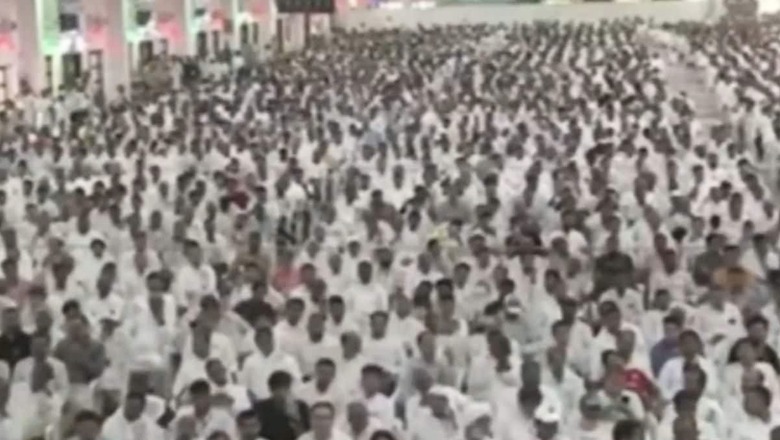
views
The Diamond Hall is the largest pillar-free auditorium situated at Rajasthan’s Abu Road. Built without pillars, the hall has been standing for the last 28 years. Indian President Draupadi Murmu, Prime Minister Narendra Modi, many former presidents, chief ministers of many states and celebrities have visited this hall. This hall was built in 1996 at Shantivan, the headquarters of Brahmakumari Ishwariya Vishwavidyalaya, during the tenure of institute head Dadi Prakashmani. It took only nine months to build it. The construction work of the hall was completed under the supervision of Chief Mechanical Engineer Ramesh Kunwar. The construction cost was more than Rs 3 crore.
The length of this hall is 450 feet and the width is 213 feet. The carpet area is 1 lakh square feet with a capacity of 25,000 people. There are 46 gates and 84 windows for the entry and exit. It is equipped with a stage of 3,000 square feet and a hall of 8,988 square feet. There are two translation rooms on both sides for programs held here in different languages. Translation can be done in 16 languages in these halls. Two big LEDs are also installed for people to watch the program. Apart from air ventilation, ten huge fans are installed. The name of this hall was recorded in the Limca Book of Records as the biggest hall in the country in the national category in 2012.
BK Vallabhbhai, looking after the Diamond Hall for 24 years, said that the idea of the Diamond Hall came up during the celebration of the Diamond Jubilee of his institute. Therefore, it was named Diamond Hall. Apart from him, there are two other in-charges for its maintenance. For cleanliness, the services of 10 regular employees and members of the institute are also taken. During big programmes, 200-250 people work in the hall.
Mechanical engineer Ramesh Kunwar, who played an important role in preparing this hall, said that there is a special mechanical design required to make such a big hall without pillars. He got this idea from Bhatinda. After that, under his supervision, the entire roof work was done without pillars. 50-60 people used to work daily in mechanical work. Apart from this, construction-related work was done separately by labourers.


















Comments
0 comment